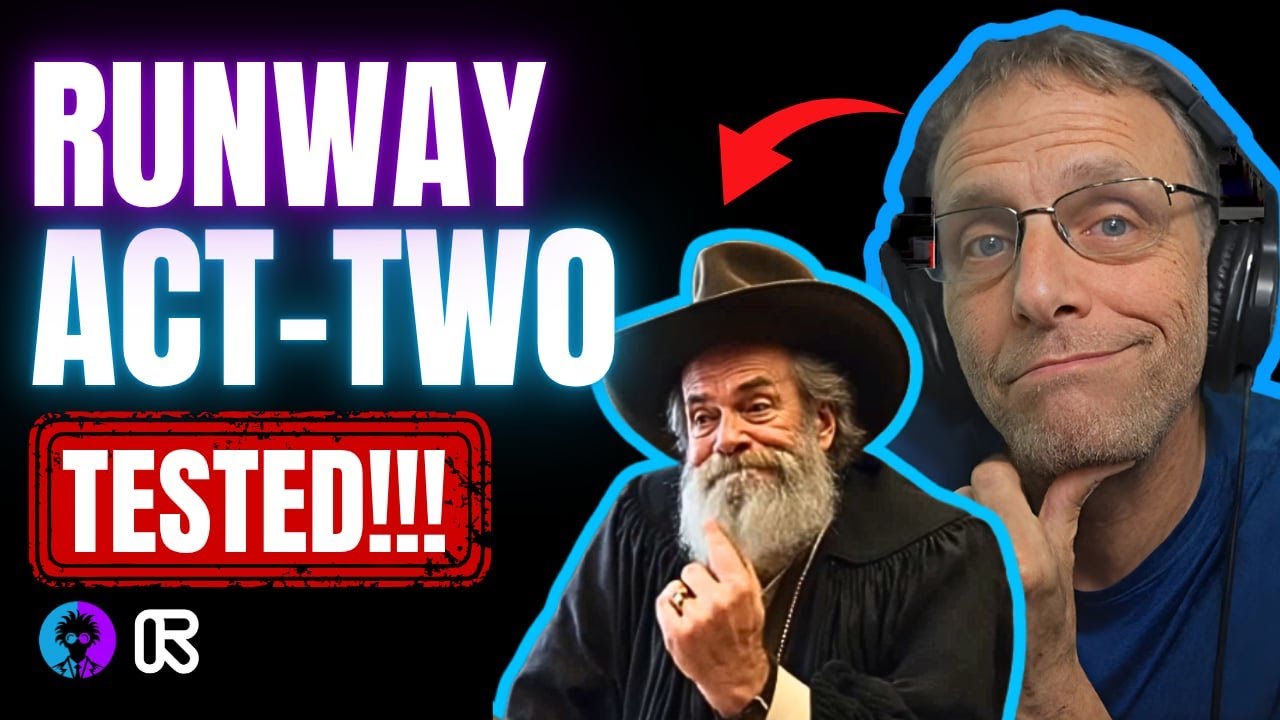The video introduces Runway’s Act Two, a major upgrade enabling full-body motion tracking for AI-driven character animation without specialized equipment, showcasing its capabilities, limitations, and customization options. It also compares Act Two with an older restyle method, highlighting Act Two’s potential to revolutionize content creation by providing more reliable and natural full-body performances for creators.
The video introduces Runway’s Act Two, an exciting upgrade from Act One, which previously allowed users to control facial animation using a driving video. Act Two expands this capability to full-body motion tracking, enabling creators to animate characters with their entire body movements without the need for markers or specialized equipment. The presenter shares their experience testing Act Two, highlighting its integration within the Gen 4 Turbo model on Runway’s platform, where users upload a driving video and a character image to generate animated videos. While the technology is impressive, the presenter notes that rendering times are longer than usual and that some glitches, such as gesture tracking inconsistencies and image upload errors, can occur.
The video demonstrates how Act Two works by showing various examples of animated characters driven by the presenter’s movements. Some animations are highly successful, capturing facial expressions and gestures accurately, while others exhibit humorous or imperfect results, such as failed body turns or misplaced gestures. The presenter explains that the system currently limits clips to 30 seconds and offers customization options like aspect ratio, facial expressiveness, and gesture tracking. Despite some flaws, the technology represents a significant leap forward in AI-driven full-body animation, offering creators unprecedented control and flexibility.
In addition to Act Two, the presenter revisits an alternative method using Runway’s restyle feature with the older Gen 3 Alpha Turbo model. This technique involves uploading a video and applying a stylized first frame to create animated characters with different appearances. Although this method does not maintain perfect consistency and can produce distortions or mismatched facial features, it allows for creative experimentation with character design and animation. The presenter showcases several examples, including animals, fantasy creatures, and stylized humans, demonstrating the potential and limitations of this approach compared to Act Two.
The presenter also discusses practical tips and challenges encountered during testing, such as the importance of clear face detection, avoiding background distractions, and the impact of starting images on animation quality. They emphasize that while the restyle method is useful for experimentation, Act Two promises more reliable and consistent results, especially for professional or enterprise use. The video highlights the excitement around Act Two’s potential to revolutionize content creation by enabling users to embody any character and bring stories to life with natural, full-body performances.
In conclusion, the video expresses enthusiasm for Runway Act Two as a groundbreaking tool in AI animation, capable of transforming how creators produce animated content. The presenter encourages viewers to explore Runway’s platform, try out the available features, and stay tuned for broader access to Act Two. They also invite the audience to share their thoughts and excitement in the comments, reinforcing the channel’s focus on cutting-edge AI technologies and creative applications. Overall, the video serves as both a detailed review and a preview of the future of AI-driven full-body motion capture and animation.
